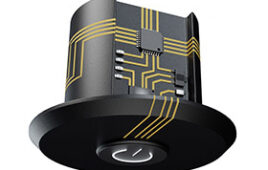From a technological perspective, making a powerful magnet is no problem. Precisely controlling the shape of magnet’s magnetic field, however, has proven difficult — until now.
Engineers at TU Wien have for the first time designed and produced magnets using a 3D printer.
The method offers scientists newfound control over the size and shape of the magnetic field, allowing them to produce magnets that better meet the needs of a range of technologies.
“The strength of a magnetic field is not the only factor,” Dieter Süss, material scientist at TU Wien, said in a news release. “We often require special magnetic fields, with field lines arranged in a very specific way — such as a magnetic field that is relatively constant in one direction, but which varies in strength in another direction.”
Scientists have had the know-how to design the ideal structural patterns for specific magnetic circumstances, but that knowledge has been mostly relegated to the computer. Traditional injection-mold technology is too expensive and time consuming to make the translation of the digital science worthwhile.
That’s not the case with 3D printers, which are fast, cost-effective and ideal for small-batch production.
The 3D printer uses magnetic micro granulate to create intricately designed geometric patterns. The granulate structures are bound together by a special polymer. The printed product isn’t actually magnetic fresh out of the machine. The granulate is printed in an unmagnetized state. But when the printed object is exposed to a strong magnetic field, the granulate takes on its intended magnetism.
“This method allows us to process various magnetic materials, such as the exceptionally strong neodymium iron boron magnets,” explained Süss. “Magnet designs created using a computer can now be quickly and precisely implemented — at a size ranging from just a few centimeters through to decimeters, with an accuracy of well under a single millimeter.”
Researchers say their findings — detailed in the journal Applied Physics Letters — will not only improve current technologies, but empower new ones.
“Now we will test the limits of how far we can go — but for now it is certain that 3D printing brings something to magnet design which we could previously only dream of,” Süss concluded.
Filed Under: 3D printing • additive • stereolithography, Materials • advanced




